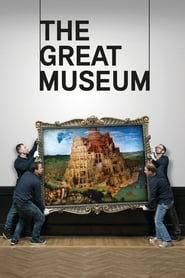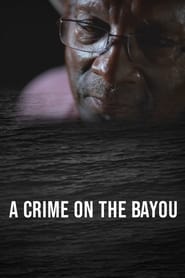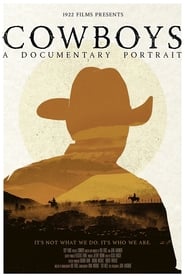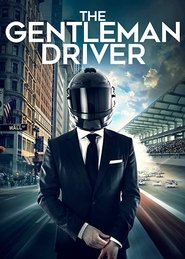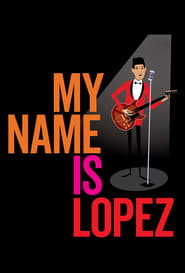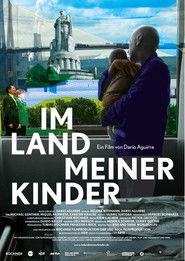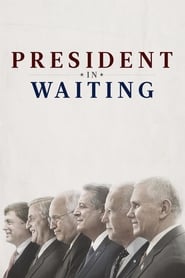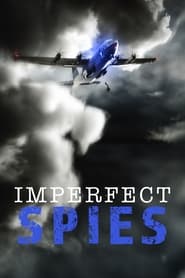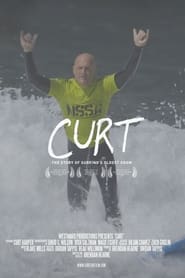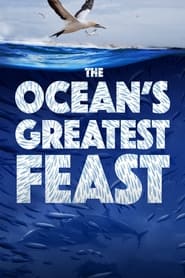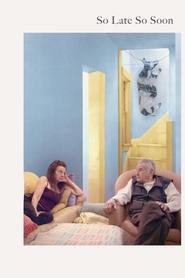Popular Documentary Movies on Free Services - Page 171
-
The Great Museum
2014
The Great Museum
2014
star 6This feature documentary portrays one of the most important museums in the world, the Kunsthistorisches Museum Wien. It presents a unique look behind the scenes of this fascinating institution and encounters a number of charismatic protagonists and their working fields unfolding the museum’s special world – as an art institution as well a vehicle for state representation. -
Without Arrows
2024
Without Arrows
2024
After 13 years living in Philadelphia, Delwin Fiddler Jr., a champion grass dancer, embraces indigenous culture by returning to his ancestral home on the Cheyenne River Reservation in South Dakota. Leaving his big city life behind, Delwin aims to protect his centuries-old Lakota heritage and heal from family tragedy, through his passion for dance. -
Naked Ambition: An R Rated Look at an X Rated Industry
2009
star 5Noted celebrity photographer, Michael Grecco, sets out to capture the essence of the AVN Awards and Convention where the best in American Pornography is displayed, celebrated and honored. -
A Crime on the Bayou
2021
A Crime on the Bayou
2021
star 6A Crime on the Bayou is the story of Gary Duncan, a Black teenager from Plaquemines Parish, a swampy strip of land south of New Orleans. In 1966, Duncan tries to break up an argument between white and Black teenagers outside a newly integrated school. He gently lays his hand on a white boy’s arm. The boy recoils like a snake. That night, police burst into Duncan’s trailer and arrest him for assault on a minor. A young Jewish attorney, Richard Sobol, leaves his prestigious D.C. firm to volunteer in New Orleans. With his help, Duncan bravely stands up to a racist legal system powered by a white supremacist boss to challenge his unfair arrest. Their fight goes all the way to the U.S. Supreme Court, and their lifelong friendship is forged. -
Cowboys: A Documentary Portrait
2019
star 6Told in the cinematic tradition of classic westerns, “COWBOYS - A Documentary Portrait” is a feature-length film that gives viewers the opportunity to ride alongside modern working cowboys on some of America's largest and most remote cattle ranches. The movie documents the lives of the men and women working on these "big outfit" ranches - some of which are over one million acres - and still require full crews of horseback mounted workers to tend large herds of cattle. Narrated through first-hand accounts from the cowboys themselves, the story is steeped in authenticity and explores the rewards and hardships of a celebrated but misunderstood way of life, including the challenges that lie ahead for the cowboys critical to providing the world's supply of beef. “COWBOYS” was filmed on eight of the nation’s largest cattle ranches across ten states in the American West. -
White Balls on Walls
2023
White Balls on Walls
2023
The slogan “Meet the icons of modern art” needs to be scraped off the glass wall of the Stedelijk, Amsterdam’s modern art museum. Because precisely who the icons of modern art are is very much the question. Who gets to decide? And who loses out? In 2019, as director Sarah Vos started shooting her documentary, more than 90 percent of art at the Stedelijk was made by white men. That’s got to change, the museum’s director Rein Wolfs believes. But this is easier said than done—so much becomes clear when Vos follows Wolfs and his team as they strive for greater diversity in the collection, as well as among their staff. -
The Gentleman Driver
2018
The Gentleman Driver
2018
star 6.9The Gentleman Driver is a documentary about four world-class businessmen who moonlight as race car drivers. Outside the racing world people remain unaware of the gentlemen driver phenomenon having never been told a story like this before. You can't buy your way into playing the Super Bowl or World Cup, but you can to race at the 24 Hours of Le Mans. Inside the the racing world gentlemen drivers face negative stereotypes, but these men challenge those with their dedication, passion, & skill. Success seems to magically follow these men.. -
Cristina
2016
Cristina
2016
star 8.2An intimate journey of a 37-year-old Cristina, as fate brings to her life both a new love and an unbeatable challenge. Determined to pass on a message of hope and a 'live in the now' mentality, Cristina's second cancer takes a toll on her diminishing body, however her love for Bruce only grows. Bruce stands by her side while juggling work and financial strains. The film follows Cristina's journey into her deep AMOUR, one that supports and lifts her up. If she had to choose between finding this deep and pure love and having cancer, or being cancer free but never experiencing true love... what would she choose? Her shocking answers are captured by veteran filmmaker Michèle Ohayon on camera. -
Speed: In Search of Lost Time
2012
star 7.8It’s a paradox. Never before in history we have worked more efficiently. Never before we have saved time with more sophisticated technologies. Anyway, nearly all of us are feeling an increasing pressure of time. It seems that the same technology that has been invented to make our life better and easier, is now enslaving us. Why? -
East Jerusalem / West Jerusalem
2014
star 7.3In Palestinian East Jerusalem, Singer-Songwriter David Broza records a new album with American, Palestinian and Israeli musicians in defiance of the Middle East's dark realities. -
My Name is Lopez
2021
My Name is Lopez
2021
Born in Dallas to undocumented Mexican immigrants, Trinidad Lopez III fought his way out of the ghetto with a guitar to become one of the first Latino rock stars. -
Land of My Children
2019
Land of My Children
2019
star 6Darío Aguirre moved from Ecuador to Germany to be with Stephanie, but from the very first day there was a third party in their relationship:the government. They issued him ten visas in fifteen years. A long trail of papers, stamps, permits, and restrictions connected Darío to Germany while also keeping him at a distance. Then one fine day the mayor of Hamburg invites Darío to become a German citizen. A confession of love? Darío responds with a tender, ironic road movie that traces his intertwined journey from the country of his fathers to the country of his children. -
Mah-Jongg: The Tiles that Bind
1998
A light-hearted yet deeply moving portrait of the Asian- and Jewish-American women who play this centuries-old Chinese game, shedding light on the common and uncommon experiences of the players that simultaneously define and transcend cultural boundaries. Along the way, it proves again and again to be a bridge connecting seemingly unlike individuals, spanning generations, continents and cultures, and transcending classification as merely a game. -
President in Waiting
2020
President in Waiting
2020
star 7A remarkable living history of the Vice Presidency. For the first time together on film, President's Barack Obama, George W. Bush, Bill Clinton, Jimmy Carter along with Vice President's Mike Pence, Joe Biden, Dick Cheney, Al Gore, Dan Quayle and Walter Mondale help uncover the path of a once ceremonial office to that of significance. This is the story of how the Vice President evolved into one of the most powerful offices in the land told by only those who have served. -
The Mossad: Imperfect Spies
2018
star 7.9The Mossad, Israel’s foreign intelligence agency, has been almost completely sealed off to the media. Now, for the first time, dozens of its former operatives have agreed to be interviewed. These rare interviews bring to light personal and political dilemmas and challenges, and form an account of the top-secret operations that have shaped Israel’s past and may yet shape its future. -
Curt
2015
Curt
2015
The story of Curt Harper, a 50-year-old competitive surfer with autism, who has become a well known figure in Southern California's surf scene. -
Michael Jackson: Chase the Truth
2019
star 7.2Taking an investigative look into the legal battles of the global superstar. Close friends, former staff and researchers paint an intimate portrait of Jackson's complicated world and put allegations of sexual abuse under the microscope. The film defends American singer Michael Jackson against allegations of child sexual abuse made in the documentary Leaving Neverland. -
John Singer Sargent: Fashion and Swagger
2024
star 9.5Filmed at the Museum of Fine Arts, Boston and the Tate Britain, London, the exhibition reveals Sargent’s power to express distinctive personalities, power dynamics and gender identities during this fascinating period of cultural reinvention. Alongside 50 paintings by Sargent sit stunning items of clothing and accessories worn by his subjects, drawing the audience into the artist’s studio. Sargent’s sitters were often wealthy, their clothes costly, but what happens when you turn yourself over to the hands of a great artist? The manufacture of public identity is as controversial and contested today as it was at the turn of the 20th century, but somehow Sargent’s work transcends the social noise and captures an alluring truth with each brush stroke. -
The Ocean’s Greatest Feast
2022
star 6The story of South Africa’s sardine run is brought vividly to life on camera. -
So Late So Soon
2020
So Late So Soon
2020
star 5Chicago artists Jackie and Don Seiden are a half-century into their marriage, time spent creating distinct yet congruous bodies of work. Jackie makes art of everything around her. Central to her practice is a recognition of the fragility of materials. That conceptual interest has turned into daily reality, as both her body and one of her most ambitious art projects, her canary-yellow Victorian house, start to fall apart. Don’s work reveals a mind resigned to death. He has always been interested in the rules of nature, and now he finds himself facing inevitable health scares. So Late So Soon is a sensitively constructed, playful character study that honors Jackie and Don’s art, and even becomes a part of it, while also locating in it glimmers of their essence.
 Netflix
Netflix
 Amazon Prime Video
Amazon Prime Video
 Apple iTunes
Apple iTunes
 Apple TV Plus
Apple TV Plus
 Disney Plus
Disney Plus
 Google Play Movies
Google Play Movies
 Paramount Plus
Paramount Plus
 Hulu
Hulu
 HBO Max
HBO Max
 YouTube
YouTube
 fuboTV
fuboTV
 Peacock
Peacock
 Peacock Premium
Peacock Premium
 Amazon Video
Amazon Video
 The Roku Channel
The Roku Channel
 AMC+
AMC+
 Kocowa
Kocowa
 Hoopla
Hoopla
 The CW
The CW
 Vudu
Vudu
 Starz
Starz
 Showtime
Showtime
 PBS
PBS
 Pantaflix
Pantaflix
 FXNow
FXNow
 Tubi TV
Tubi TV
 Kanopy
Kanopy
 Comedy Central
Comedy Central
 Crunchyroll
Crunchyroll
 Microsoft Store
Microsoft Store
 Redbox
Redbox
 Sun Nxt
Sun Nxt
 ABC
ABC
 DIRECTV
DIRECTV
 Crackle
Crackle
 Fandor
Fandor
 Plex
Plex
